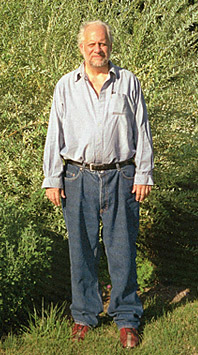The Last, Best Bargain
by George Ball
This is the season when we appraise the year passing, and gently outline the year ahead, tracing tentative personal goals and plans. Even as our country inexorably advances towards the dreaded fiscal cliff, it is likewise a period when the press routinely diverts us with articles highlighting our era’s grand acquisitors and their grand acquisitions.
We read about the Russian oligarch whose Manhattan pied-a-terre for his 22-year-old daughter set him back (but not very far back) a cool $88 million. There’s the art collector, financier Leon Black, who plunked down $120 million for Edvard Munch’s “The Scream.” We read, too, of the Malaysian tycoon who trolls about in his $4.8 billion yacht. Our proud possessors might well want to toast themselves with an 1811 Chateau d’Yquem, which flew out of the doors of an auction house at the too-good-to-pass-up price of $117,000 a bottle.
The plutocrats and their plums are not without redeeming social value. Their outlandish expenditures qualify them as gaudy efflorescences of supply side economics. With them, the slow drip-drip of trickle-down becomes a roaring waterfall, cascading into the coffers of builders, decorators, craftsmen, artists, and tradespeople. Indeed, if all of America’s very rich were to emulate these stupendous spenders, our descent from the fiscal cliff would surely land us all in a feather bed with a high thread count.
I’m reminded of King Louis XIV of France, whose lavish expenditures on Versailles subsidized thousands of French drapers, tailors, goldsmiths, silversmiths and other artisans. In order to channel fresh water to his palace, he employed 22,000 soldiers and 8,000 workers. Versailles alone employed some 15,000 people. He had at his service a gilded version of the Works Progress Administration. Louis XIV gets too little credit as an exemplar of Keynesian economics.
These musings bring up the whole realm of values—the vast, too-little-charted territory where we measure things at their true worth, and, so doing, hope to uncover our individual and collective meanings. The discussion of values gets little, if any, attention in today’s noisy press. The early 19th C. German philosopher Schopenhauer observed that the French aptly called journalists “day laborers”, a designation that helps explain their remarkably confined perspective. In journalism, first principles come last.
Values take a number of forms. At the more material end of things, there’s economic value: the tangible price for a tangible product or service. We call this kind of value a bargain when we receive more in the exchange than we might customarily hope for or expect. A true bargain is universally held to be a good thing, even by your average billionaire.
Then we come to values with a capital V, the kind you can’t buy: the Values of nurture and safety, emotional attachments, community, truth, beauty, morals and ethics, virtue, knowledge, and wisdom. Oddly enough, these Values seem faded as suitable topics for the mass media.
It was not so in the 19th century, when the steam engines of the Industrial Revolution had long been set in motion, and popular culture and consumerism ascended. These values found fervent and articulate champions in the philosophers Thoreau and Emerson in the States, and Arnold and Ruskin in Great Britain.
In the 21st century, there remains one place where all eternal values come alive—where both transcendent and tangible values intersect: the garden. Here is where you find beauty and truth, as well as flavor and fragrance in a true feast for the soul as well as the senses. Here you breathe freely, move gently, and refresh your body under the dome of heaven.
It is no coincidence that, from the Native American tribes, most notably the Pawnee who reconfigured their gardens according to the movement of the stars and planets they worshipped, to the children of Abraham—Hebrew, Christian and Moslem—whose foundational texts began as agriculture manuals, most religions arose from the principles of plant domestication or, as Thoreau put it, “faith in a seed”. Gardening is not simply the original paradigm of civilization—and, thus, politics—it is the best one. We reap what we sow indeed, especially in the gardens of humanity. And time—with its requirements of planning and patience so contrary to current popular culture—must be respected.
But to get back into lower case value for a moment, here in the garden is where extraordinary savings await you: the last bargain on earth.
Let’s do the math. A couple packets of tomato seed—either the pink and tangy Brandy Boy or the fragrant, sweet and highly adaptable Big Daddy—yields 50 guaranteed seedlings out of 55 seeds total. An average plant produces 35 fruits; multiply by 50. Your tomato patch yields 1,750 fruits, at a retail store price of $1.50 a pound. That would be $2,625 worth of store-bought tomatoes from a couple seed packets costing you about eleven dollars.
Your return on investment? 238 to 1 or 23,800 per cent, plus a deep sense of satisfaction. And your homegrown tomatoes are juicy beauties, bursting with just-picked flavor—everything bland, faux store-bought tomatoes aren’t.
That’s not just a value, but a harvest of Values. The last of the “Big Splendors”.
Russian oligarchs, take note.
